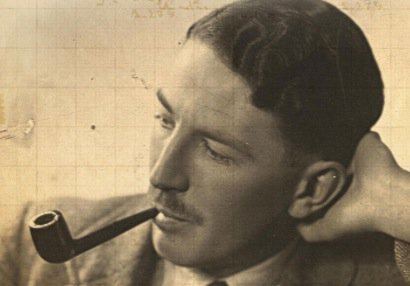Name Gordon Welchman | Role Mathematician | |
 | ||
Books The Hut Six Story: Breaking the Enigma Codes Siblings Enid May Welchman, Eric Welchman Children Susanna Griffith, Jeremy Nicholas Welchman, Rosamund Welchman Similar People Stuart Milner‑Barry, Tommy Flowers, Alan Turing | ||
William Gordon Welchman (15 June 1906 – 8 October 1985) was an English mathematician, university professor, Second World War codebreaker at Bletchley Park and author. After the war he moved to the US, and later took American citizenship.
Contents

Early life, education and career

Gordon Welchman was born, the youngest of three children, at Fishponds in Bristol, to William Welchman (1866–1954) and Elizabeth Marshall Griffith. William was a Church of England priest who had been a missionary overseas before returning to England as a country vicar, eventually becoming archdeacon of Bristol. Elizabeth was the daughter of another priest, the Revd Edward Moule Griffith.

Welchman was educated at Marlborough College and then studied mathematics as a scholar at Trinity College, Cambridge, from 1925 to 1928. In 1929, he became a Research Fellow in Mathematics at Sidney Sussex College, Cambridge, a Fellow in 1932 and later Dean of the College.
Bletchley Park

Just before the Second World War, Welchman was invited by Commander Alastair Denniston to join the Government Code and Cypher School at Bletchley Park, in the event of war. He was one of four early recruits (the others being Alan Turing, Hugh Alexander and Stuart Milner-Barry), who all made significant contributions at Bletchley and who became known as "the wicked uncles". They were also the four signatories to an influential letter, delivered to Winston Churchill in October 1941, asking for more resources for the code-breaking work at Bletchley Park. Churchill responded with one of his "Action This Day" written comments.
As stated in his book, most of his work at Bletchley was centred on what was known as "traffic analysis" of encrypted German communications. This is roughly described as the practice of examining parts of messages that are standardised descriptors or headers, such as message origination, message destination, time/date information, and so on. Most cryptographers agree this is markedly easier than attacking cryptographic ciphers directly (although still very complicated and mathematically intensive processing is needed to make initial discoveries), and Welchman is credited with innovating the approach. This led to data analysis techniques that today we describe as metadata analysis.
Welchman envisaged an enhancement to Alan Turing's improved design of the Polish electromechanical Enigma cipher-breaking machine, the bombe. Welchman's enhancement, the "diagonal board", made the device substantially more efficient, cutting decipher times down from days to mere hours, in the attack on ciphers generated by the German Enigma machine. Bombes became the primary mechanical aid in breaking Enigma ciphers during the war, by speeding up the search for current wheel order settings being used with the Enigma machines. Wheel order settings were changed often, initially at least once per day.
Welchman was head of Hut Six, the section at Bletchley Park responsible for breaking German Army and Air Force Enigma ciphers. During his time at Bletchley, Welchman opposed engineer Tommy Flowers' efforts on the Colossus computer (the world's first programmable electronic computer) because Colossus used vacuum tubes.
In 1943, he became assistant director in charge of mechanisation and also had responsibility for cryptographic liaison with the US.
Postwar
Soon after the end of the war Welchman took up Hugh Alexander's old post as director of research for the John Lewis Partnership before then moving to the United States in 1948 where he taught the first computer course at MIT in the United States. He followed this by employment with Remington Rand and Ferranti. Welchman became a naturalised US citizen in 1962. In that year, he joined the Mitre Corporation, working on secure communications systems for the US military. He retired in 1971, but was retained as a consultant.
In 1982 his book The Hut Six Story was published, initially by McGraw-Hill in the US and by Allen Lane in Britain. The National Security Agency disapproved. The book was not banned, but Welchman lost his security clearance (and therefore his consultancy with MITRE) and was forbidden to discuss either the book or his wartime work.
Welchman died in 1985; his final conclusions and corrections to the story of wartime code breaking were published posthumously in 1986 in the paper "From Polish Bomba to British Bombe: the birth of Ultra" in Intelligence & National Security, Vol 1, No l. The paper was included in the revised edition of The Hut Six Story published in 1997 by M & M Baldwin.
Personal life
In 1937 Welchman married Katharine Hodgson, a professional musician, the daughter of Francis Faith Hodgson, who was a captain in the Indian Army. The couple had a son and two daughters. In 1959 Welchman divorced Katharine and married the American Cubist painter Fannie Hillsmith. The marriage lasted until 1970. Fannie was the daughter of Clarence Hillsmith, a consulting engineer from New Hampshire.
In 1972 he married Elisabeth Huber, daughter of Anton Wilhelm Huber, a sawmill owner and carpentry contractor from Bavaria and his wife, Myrtle Octavia Hussey, who was Welchman's second cousin.
Legacy
Gordon Welchman was the subject of a BBC documentary broadcast on BBC Two on 7 September 2015. The programme was entitled Bletchley Park: Code-breaking's Forgotten Genius and as The Codebreaker Who Hacked Hitler when broadcast on the Smithsonian Channel. The withdrawal of his security clearance in 1982, by the NSA, after the publishing of his 'Hut 6' book, was described as "devastating". On 26 September 2016, a blue plaque was unveiled by his daughter, Susanna Griffiths, at St Mary's Church, Fishponds, in Bristol. Speaking at the event, the Director of GCHQ Robert Hannigan acknowledged the harsh treatment of Welchman and paid tribute to his "immense contribution" as a "giant of his era"
